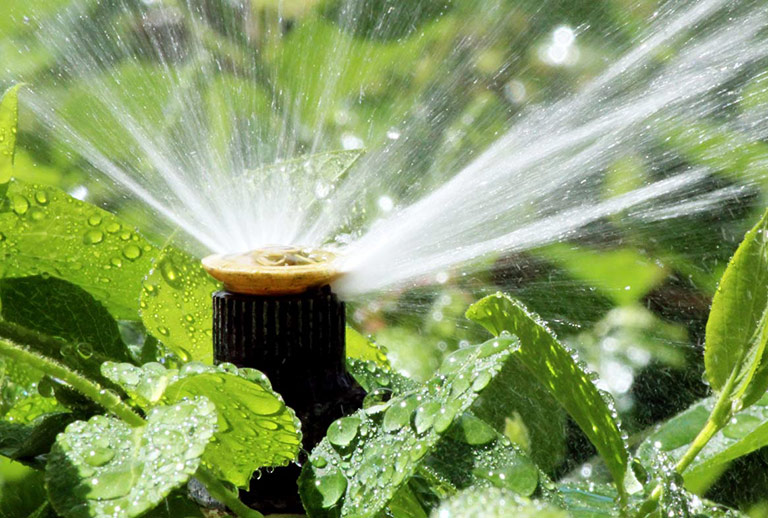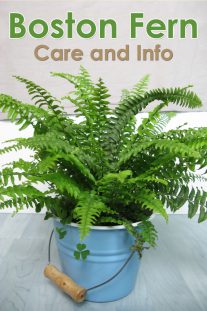
Watering plants correctly is one of the easiest things to learn in gardening but many people find it confusing. The reason for this is that they want to use regular schedules. Regular schedules, like once a week, do not work. If you want to learn how to water your garden or house plants correctly you need to learn a little bit about plants and soil. This post will simplify the whole thing so that you will always know when to water.
Evaporation – the Key to It All
Plants need to be able to get enough water through their roots to keep the top green parts growing properly. They are able to do this when they have a good root system, and the soil around the roots has water in it. In this article the term soil includes garden soil and any type of soil-less material.
When water is added to soil, it fills the little holes in the soil and stays there until one of three things happen. Either it runs away, plant roots suck it up, or it evaporates. When too much evaporates, the soil becomes too dry and roots can no longer find water to absorb.
The key to understand watering is to understand evaporation. The rate of evaporation is a term used to describe how quickly water evaporates. Many things affect the rate of evaporation.
- Temperature – evaporation is higher at higher temperatures.
- Type of soil – clay holds lots of water, sand holds very little and peat moss is somewhere in the middle.
- Size of pot – large pots tend to be deeper and deeper soil holds water better since evaporation takes place at the surface of the soil.
- Type of pot – clay pots are porous and have higher rates of evaporation than plastic pots.
- Humidity – evaporation is slower in humid environments than dry environments.
- Mulch – mulch on the soil surface reduces evaporation significantly.
- Wind – wind increases the evaporation rate.
Watering Plants on a Schedule

Everyone wants to water on a regular schedule; once a day. or once every three days and so on. This does not work. If you look at all of the above factors that affect the rate of evaporation, you quickly realize that they change all of the time. Summer is hotter than winter. Summer may be drier or more humid than winter. Around here, we can have a very dry week and then a humid week – depending on the weather.
In gardens the growth of plants also affects the amount of water in the soil. Dormant plants don’t remove much water from the soil, but once they are growing they do. Plants that are located close together remove water faster than the same plants that are farther apart.
Rain also affects watering schedules. There is nothing dumber than having lawn sprinklers set on a timer only to have them water during a rain. You need to water sooner after a light rain than after a heavy rain.
There are so many variables that a schedule will never work.
Advice From Others
I frequently see people on social media asking for a watering schedule, “I just bought a new rose, how often should I water it?”
Unless you live in the exact same climate as the person you are asking, they can’t tell you how often to water. If you have different soil, or different mulch – they can’t give you the right answer. Only you can figure out how often to water.
Type of Plant
How important is the type of plant for determining when to water? There are special cases, but most plants need the same care. Some plants like to become dry between watering, and others don’t – but most plants, especially in a garden, don’t want to become completely dry.
Some plants go dormant and stop growing, spring bulbs for example. They generally want to be dry during the dormant stage.
Unless you have some reason for special care, treat all growing plants the same way. Water when the soil starts to get dry.
When Do You Water?
The simple and correct answer is, when the soil needs more water. It is really that simple. Water when the soil needs it.
How do you determine if the soil needs water? Use the finger meter. Stick your finger into the soil a couple of inches and if it feels dry, water. If it is not dry, don’t water. It’s as simple as that.
This works for house plants, outdoor planters and the garden. Let me give you a simple example. Newly planted trees should be keep moist all of the time for at least a year. I usually plant in fall, in clay soil, so my soil tends to hold water quite well. I also mulch with about 8″ of wood chips. If I water well in my zone 5 garden, in late September, I don’t have to water again until next summer. Zone 5 cools down in September reducing evaporation. The mulch reduces this even more.
Water when soil needs it – not on a schedule.
How Much Do You Water?
Pots should be watered until all of the soil is wet. This usually means water will be running out the bottom of the pot. In gardens, water until the soil is wet 6 inches below the surface.
Try this experiment in the garden. Water until you think you have watered enough. Then dig a small hole and see how deep the water went. If it is not wet or at least moist at a depth if 6 inches you did not water enough. Watering properly takes a lot of time and water. It is far better to water less frequently and go deep, than to water frequently.
A well watered garden, with mulch, is probably good for a couple of weeks in cooler zone 5. In my zone 5 garden with clay and mulch, I rarely water the gardens. I water a bit in my shade garden because it is getting too much sun since I removed some large maples, and I water newly planted things for the first few months, but the main garden Almost never gets watered.
Deep watering is important because it encourages plants to produce deeper root systems. Deeper roots mean that they can withstand drought better and therefore need to be watered less often.
Watering New Plants

New plants need some special care because they have small root systems, and the roots do not go very deep yet.
New woodies, the trees and shrubs, should be well watered for the first year so that they develop a good root system. But only water when the soil starts to dry out. Many woodies are killed by over watering. In cold climates keep the roots watered right through winter since most root growth happens in cool weather.
New perennials and annuals should be watered every few days for the first week or two. They have very small root systems and should not dry out at all. After two weeks reduce watering and only water when needed. Because of their limited root system they can’t take drought like larger plants.
The vegetable garden is a bit different. In most cases you want plants to grow quickly, and produce good food. Most vegetables do best with regular watering. Don’t expose them to drought since this slows down growth, and can cause problems with fruit or seed production. This is especially true for seedlings.
Watering Mistakes
Many people think that newly planted things need to be watered every day. That can easily kill the plant. Roots need lots of air and if you water too much you drown them and kill them.
Waiting until leaves droop is not a good idea for most plants. A drooping plant indicates that it is in trouble and is desperate for water. But should it be watered? Maybe, maybe not. A plant with no roots due to over watering looks just like a plant that has been under watered.
Be careful using softened water. Water that has gone through an ion exchanger that uses salt will add too much sodium to the water and sodium is toxic to plants. Frequent shallow watering develops very shallow roots, making then very vulnerable to drought.




Leave a Reply